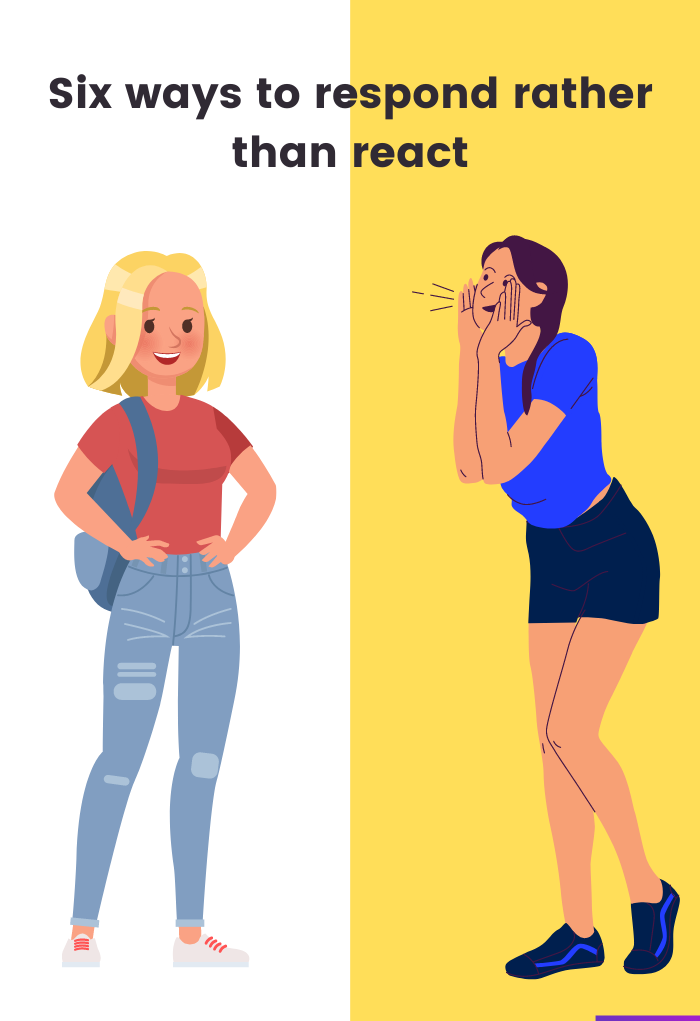Six ways to respond rather than react

Parent Post
There’s a big difference
There’s a big difference between responding and reacting.
The difference is the key to looking for a thoughtful response rather than an immediate reaction.
The answer comes in two parts: first, how to respond rather than react; then how to support that choice and habit in others.
How to help others
How to help others respond
Once you understand the differences, the best way to help others is to follow this three-step formula.
- Expect. The first step is to make your expectations clear and help people understand when and where you expect a response rather than an immediate reaction.
- Model. It is hard to encourage others to respond if you aren’t modeling it yourself.
- Coach. Once you are responding rather than reacting, you can coach others based on your experience and citing examples.
While responding seems like
While responding seems like the prudent choice, you may wonder how speed plays into this equation.
You would logically need to react or operate in a split-second decision mode in a crisis or emergency.
The reality is the best crisis managers are actually trained and practice a variety of scenarios precisely so they can respond rather than react.
How to respond rather
How to respond rather than react
- Think big picture. When you think about how a specific situation fits into your overall goals, it will be easier to respond.
- Put the situation in context. Always consider the context – what is happening and how the next step will best serve you.
- Blend logic and emotion. The goal is to balance immediate emotional responses with thoughts and facts to fill in the blanks. This is the essence of responding.
The difference is in
The difference is in preparation and thought.
Response doesn’t mean you will be slow, just thoughtful.
You and your team will reach better decisions and make better choices when you respond rather than react.
Ask yourself the
- Ask yourself the key reaction question. The key question is: Am I reacting? Simply asking yourself that question can ground you and give a quick mental break to choose differently.</li
- Recognize choices. When you realize that you always have choices, you can consider their consequences before moving forward.
- Create a 20/20 vision. The goal is to mentally move into the future and look back with an imagined 20/20 vision to determine your best response to the current situation.

